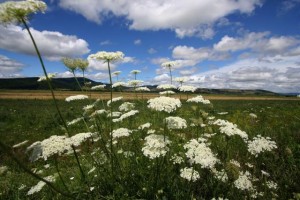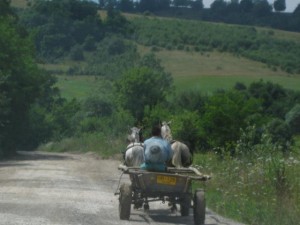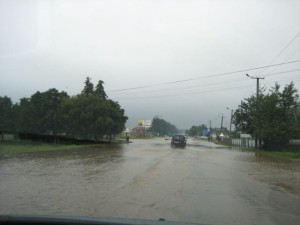Wed 13 Aug 2008
Insane in the Ukraine
Posted by Derek under Romania, Ukraine
[3] Comments

To many, “Eastern Europe” signifies the old Communist bloc – an area of the world continuously grey and bleak, with long lines filled with desperate people waiting hours to score a loaf of bread or a piece of meat. Fortunately, these stereotypes are mostly a thing of the past. Since the Soviet Union collapsed in the late 80s/early 90s and the communist strongholds of Eastern Europe have changed their political and economic bent, Eastern European countries have undergone a slow, but significant, change in their way of life. As many of the countries have entered the European Union and their economies have expanded rapidly in the past few years, many places in Eastern Europe seem as much, or even more, “Western” as their geographical neighbors. Selfishly, we’ve been a little disappointed, hoping to witness some of the old school ways of the Communist era. Well, we finally got our wish…

As we were waiting in line to cross the border between Romania and Ukraine, a uniformed border guard looked down at the French license plates (a novelty in this part of Europe) on our Peugeot rental car and knew we were ripe for some harassment. He approached us and asked us for the receipt for our payment of the Romanian road tax. We correctly informed him that we were unaware of such a tax, had never been asked to pay such a tax and had found no mention of a road tax in either of the Romanian guidebooks we had consulted. Brilliantly feigning surprise at our lack of knowledge, he informed us that the penalty for not paying the tax was $200 and that, after finishing the border-crossing formalities, I should park the car and come see him in his office.
Once our passports had been stamped, I quickly found myself in the guard’s tiny office. Brashly, the young officer announced, “I just told you the legal process for handling your lack of payment of the road tax. Why don’t you suggest an alternative solution?” Acting perplexed, I asked him what he meant. “The fine is $200. How much do you think is a fair payment?” Resisting my innate urge to punch the corrupt guard in the jaw, I started a negotiation that resulted in an agreement of $40 for the mythological “road tax”. As I began to hand over the bribe money, the guard spotted his superior officer coming towards his office and began freaking out, saying “Put the money away! Hide! Oh, %!@&! Don’t say anything!” Fortunately for the guard but unfortunately for me, his boss reversed course and went away to handle another matter. Wiping sweat from his brow, the guard quickly grabbed the $40 from my hand, and I ran for my car as quickly as possible.

It was a rainy day (in fact, it had been raining for days), and just a mile after crossing the border, we spotted pools of water on the road. As we continued to drive, the water started getting higher along the side of the road and under the bridges we crossed. Cautiously, we made our way through sections of the road that were partially flooded. We saw rivers that had escaped their banks and flooded several villages. Luckily, we made it past the flooded area fairly quickly and without incident, only to find out a couple of days later that the floodwaters had risen to produce Ukraine’s worst flood in 200 years, killing 22 people, affecting over 40,000 homes and causing over $800 million in damage (unbelievably, the country’s special disaster fund only has $57 million in it).

As we continued our drive, we were pulled over by a police officer. This stop brought our trip total to five – South Africa (speeding – no payment), The Netherlands (driving across a bridge reserved for buses and taxis because we couldn’t read the sign that, in Dutch, told us not to – $60 hit), Croatia (passing a car in a no-passing zone – no payment), Romania (speeding – no payment) and now Ukraine. When behind the wheel of a motorized vehicle, I drive faster than the speed limit at almost every chance I get. This is especially true in Eastern Europe, where the speed limits typically hover around 30 or 40 mph–even on the highway. When I got pulled over this time, however, I was definitely not speeding because I had been stuck for several minutes behind a huge truck that was barely moving. When the cop pulled out his radar gun, though, it registered 50 mph – 20 mph over the speed limit. I told him, in English, that his radar gun was incorrect, but my English was as comprehendable to him as his Ukrainian was to me. He quickly cut to the chase and started ask for money. Immediately, we began a caveman-esque process of negotiation, flashing numbers with our fingers, accompanied by grunts and head movements. Eventually, our negotiations ended with the cop pocketing only about 10 euros (about $16). A paltry sum for a story I’ll have for the rest of my life.